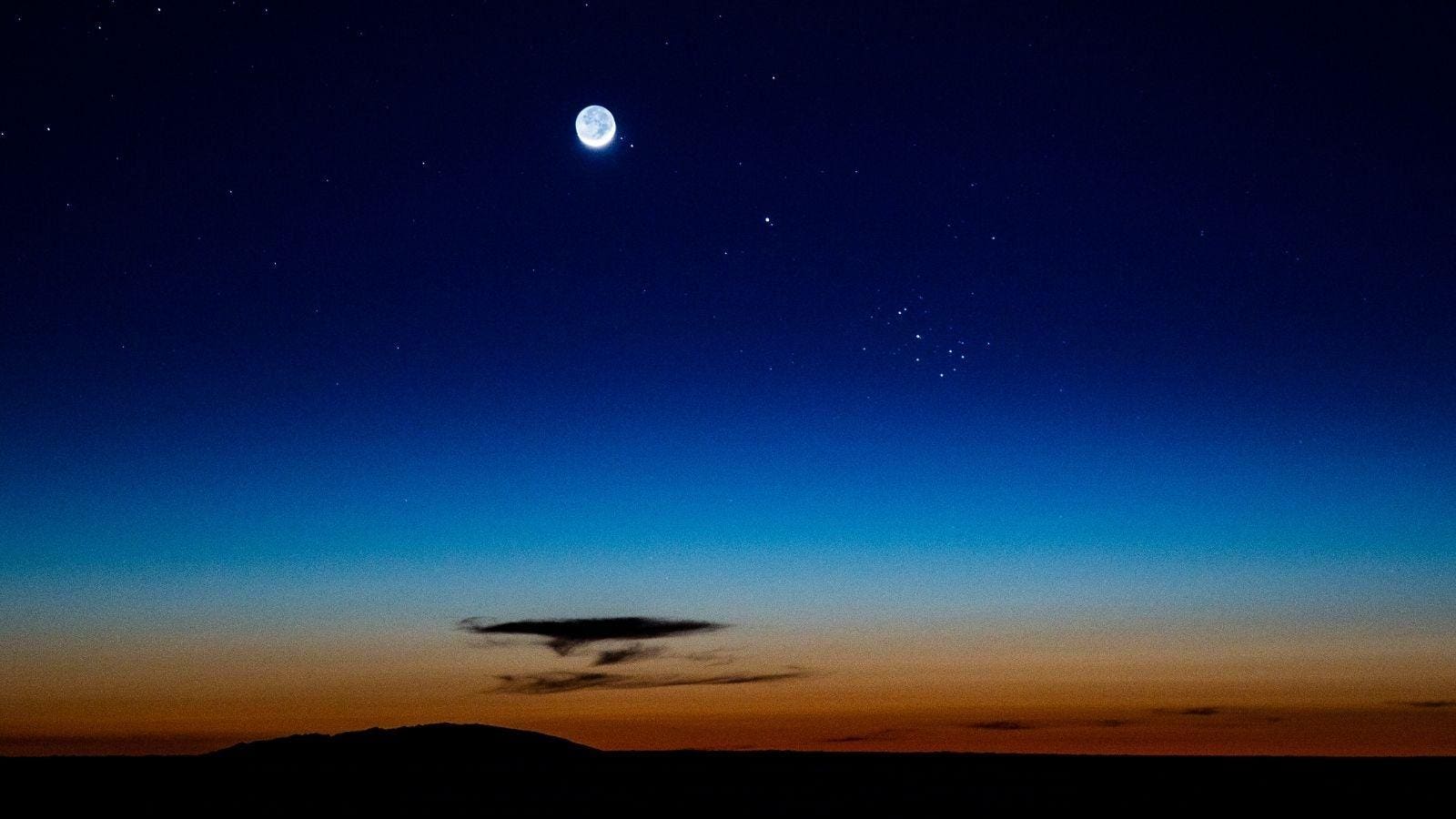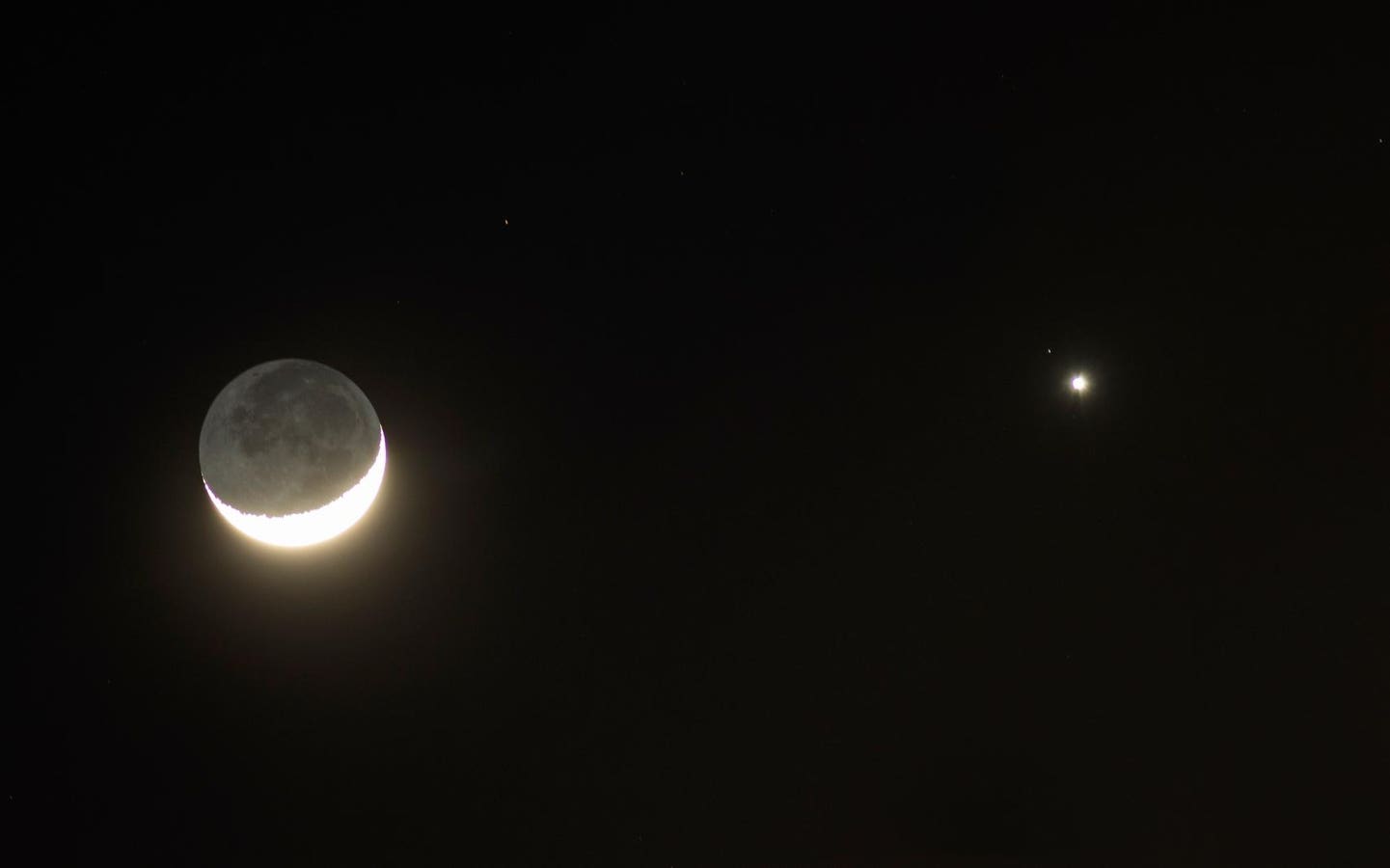A crescent moon and the Pleiades.
Each Monday, I pick out North America’s celestial highlights for the week ahead (which also apply to mid-northern latitudes in the Northern Hemisphere). Check my main feed for more in-depth articles on stargazing, astronomy, eclipses and more.
The Night Sky This Week: July 14-20, 2025
Mid-July brings us into the heart of the summer stargazing season, with long, warm nights and plenty of celestial sights. This week, the moon begins a graceful slide through the late-night sky, pairing up with Saturn midweek before reaching its delicate crescent phase just ahead of a stunning conjunction with the Pleiades. Here’s everything you need to know about stargazing and astronomy this week:
Tuesday, July 15: The Moon Meets Saturn
Tuesday, July 15: The Moon Meets Saturn
Late tonight, a 70%-illuminated waning gibbous moon will rise in the east alongside Saturn. Look about halfway up the southeastern sky at midnight to see them paired just two degrees apart. Saturn will glow a steady yellowish light above the moon. The ringed planet is gradually brightening as it approaches its annual opposition on September 21, when it will be at its biggest and best of the year.
Thursday, July 17: Last Quarter Moon And Perseid Meteor Shower
Tonight’s moon rises around midnight in its last quarter phase, appearing half-lit. This marks the beginning of a stretch of darker evening skies. That’s great news for meteor watchers, with the first Perseids of the year beginning tonight. While the famously prolific peak night (on August 11-12, 2025) will sadly be spoiled by very bright moonlight this year, now through late July is an ideal time to catch stray Perseids in moonless night skies. Look northeast after midnight and be patient.
Sunday, July 20: Moon And The Pleiades
Sunday, July 20: Moon And The Pleiades
Wake early this morning — about 45 minutes before sunrise — and look east-northeast for one of the loveliest sky scenes of the month. A delicate 24%-lit crescent moon will glide alongside the dazzling Pleiades open cluster (also known as the Seven Sisters). “Earthshine” — sunlight reflected off Earth’s oceans, ice caps and clouds — will give the moon’s darkened portion a ghostly glow.
The times and dates given apply to mid-northern latitudes. For the most accurate location-specific information, consult online planetariums like Stellarium.
Wishing you clear skies and wide eyes.









